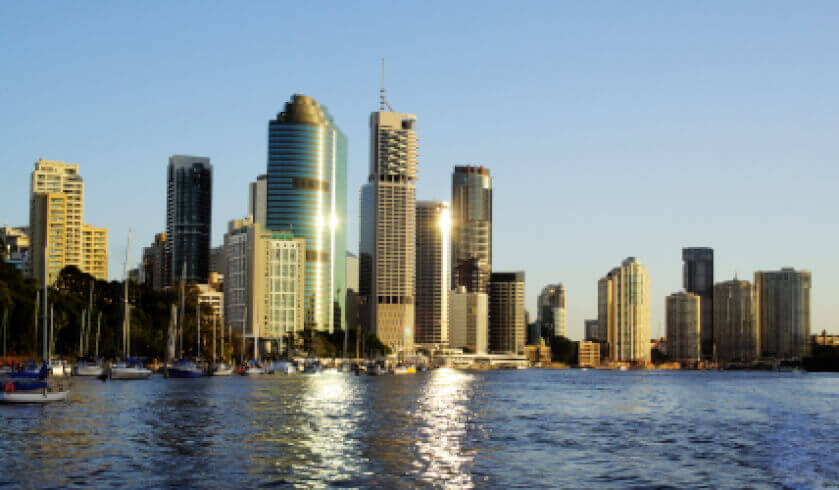Why this property developer continues to build in Brisbane
While property development is undeniably more complicated than most wealth-creation strategies, Jason Byron has found his niche in building multiple dwellings and taking on development projects amounting to as much as $20 million.

For many property investors, the development of real estate assets is a “completely different world” from purchasing existing properties. However, the first step to both strategies is pretty much on the same page—education, research, and self-assessment.
To continue reading the rest of this article, please log in.
Create free account to get unlimited news articles and more!
“[Some people are] developing when they shouldn't be developing. They don't have the skills to develop [or] the understanding of all the dynamics required to be a good developer. It's hard to be a good developer,” Smart Property Investment’s Phil Tarrant said.
Is it worth the risk?
Jason credits his success in property development to a well-structured system he has built for himself over the years.
According to him: “If you don't have a system to follow then you're going to lose money,” he said.
The property investor explained further: “You've got a need of people wanting those convenient areas to live in [and] they want to have a nice brand-new product … [so] you've got to work backwards from there. The people that are successful have a system behind them to follow and the best thing about a system is [you] can repeat it.”
Moreover, the government actually makes it easier for property developers to find good areas to build their assets in.
Jason said: “The areas that [available] are laid out [because] the government has growth corridors and it’s going to be in every single state … All you have to do is get to that growth corridor and have a look, and that's where they actually say to developers, ‘Hey, we need you.’ ”
“That's the beauty of it—[you can always] go somewhere,” the property developer added.
‘Doom and gloom’—should you pay attention to it?
As in the case of property investors, property developers are also often on the receiving end of “doom and gloom” headlines that warn them about particular suburbs.
Jason often builds his projects in Brisbane, and while there appears several warning from the media, he does not usually concern himself about the market nor his ability to shift the properties once the development is finished.
“I worked in media for quite a while, and so I say that they are factual stories … but are they the real stories? They're using the approvals that have gone on the air, and that's fine, but all of them are renting, so it's funny when they finish them [and] they don't have a problem renting them out,” he said.
He believes that the demand for townhouses in Brisbane will continue because people are always looking for convenient locations. In the past, the city was considered as a “sleepy town” because, according to Jason, “nothing was happening”—that is, until the local council decided to allow areas to be developed after the city lost most of its talents to the Gold Coast.
Jason said: “Suddenly, something happened, and they went, ‘We don't have any young talent here anymore. We need to let people live in brand-new places.’ And that's when they started changing it all and giving the opportunity.”
“When I first moved up to Brisbane, there wasn't such a thing as a nice, brand-new unit to move into, [but] now there's hundreds of them. So, the demographic’s kind of catching up to them and they're loving it!” the property developer added.
Risk management
At the end of the day, Jason believes that a good property investment is a product that meets the demand of the market.
“Is it convenient?” and “Is it affordable?” are two of the most important questions he asks himself when taking on a new development project.
He explained: “I go, ‘Why is someone living in a townhouse or a unit over a house?’ And ... there's two different scenarios. One is that they want the convenience factor or, [two], they can't afford a house in that suburb but they [still] want to be there because it's a beautiful suburb and it's convenient.”
“And so, I look at those factors and I look at the demographics around and go, ‘Where is the nearest restaurant?’ ‘Where is the nearest public transport?’ ‘Where is the convenience factors of the cafes and that type of culture?’ And that's where I build my townhouses, and it always works,” Jason added.
Due to the fact that the properties are built in a good and convenient location, risk management becomes considerably easy for him. If the Brisbane market unexpectedly goes down, a lot of his developments are on or over 50% cash-on-cash return—meaning, the worst that could happen is a break even.
“I've got a good buffer there. If something goes wrong, what's the worse that can happen to us? We break even. What's the worse thing that can happen to us? We have to hold one … Those are the two scenarios that might happen out of it,” he said.
Even if he has to hold the properties after they are built, the value of these assets is unlikely to decrease because they are, after all, brand new products.
According to the developer: “I can still rent it. I can still hold it if I do an interest-only loan on it.”
Tune in to Jason Byron’s episode on The Smart Property Investment Show to find out how his portfolio grew from a countryside home to $20 million development properties and how growth corridors are his chosen path to success.

